Vera Koo opines about her training for the Huntsman World Senior Games, and how it’s not just about learning shotgun skills. In fact, she’s learning new lessons from life and from other shooters.
Sponsored by Vera Koo
I traveled to Utah last October to observe the Huntsman World Senior Games in hopes of gaining more knowledge about sporting clay shooting as I prepare to compete in the discipline this year.
I returned home having learned an important lesson and gained inspiration from a veteran shooter.
I did not begin learning the shotgun shooting discipline until after I had retired from the Bianchi Cup following the 2018 competition. My goal with shotgun shooting was never to rejoin competition. Rather, I figured it would help keep my body and mind in shape.
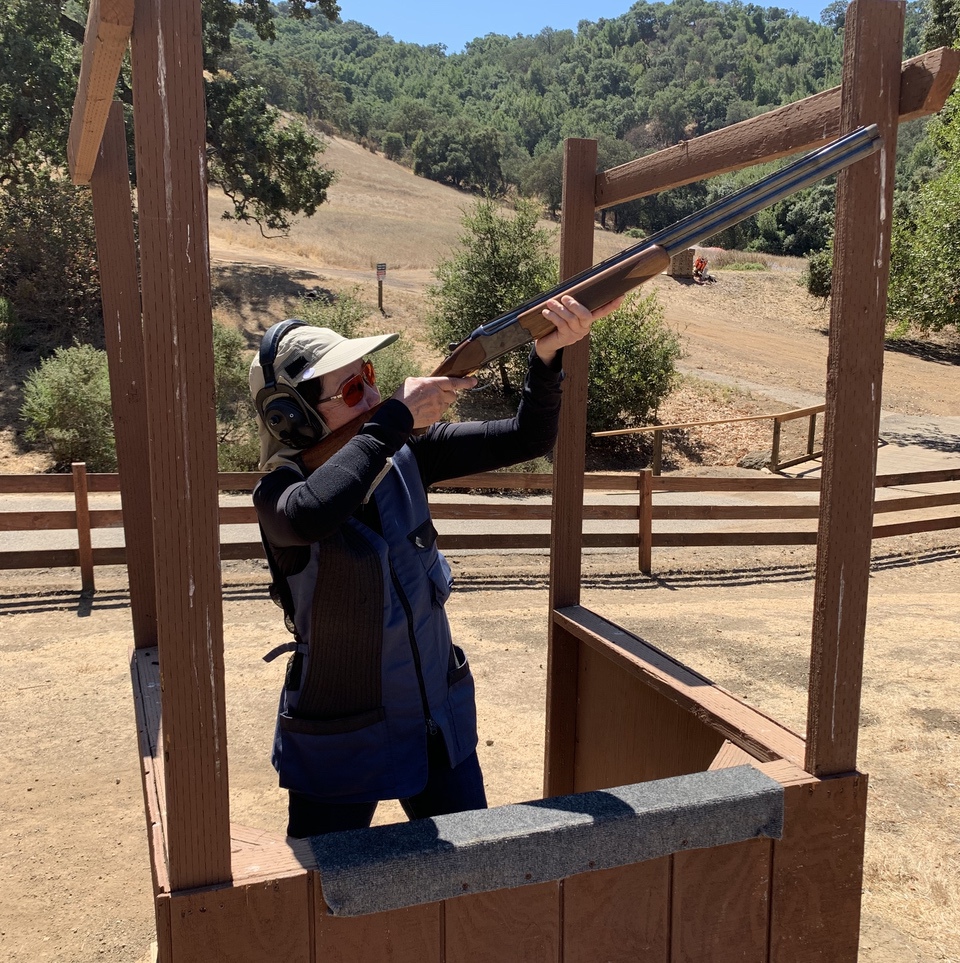
After I had been taking shotgun lessons for several months in late 2019, my longtime mentor, Jim O’Young, introduced the idea of competing in sporting clay shooting at the Huntsman World Senior Games. Initially, I rejected the thought. I’m retired, I told Jim, and my competition days are finished. But the more I researched the competition, the more I warmed up to the idea. I decided to observe the competition last fall.
While in Utah, I followed a quartet of shooters, whom I dubbed the super squad. The group consisted of three men and one woman: Richard Gillett, Nick Cipollino, Mike Bumgarner and Tammy Gillett.
My attention gravitated to Nick, in particular. He won gold in the sporting clays 90-and-up age division.
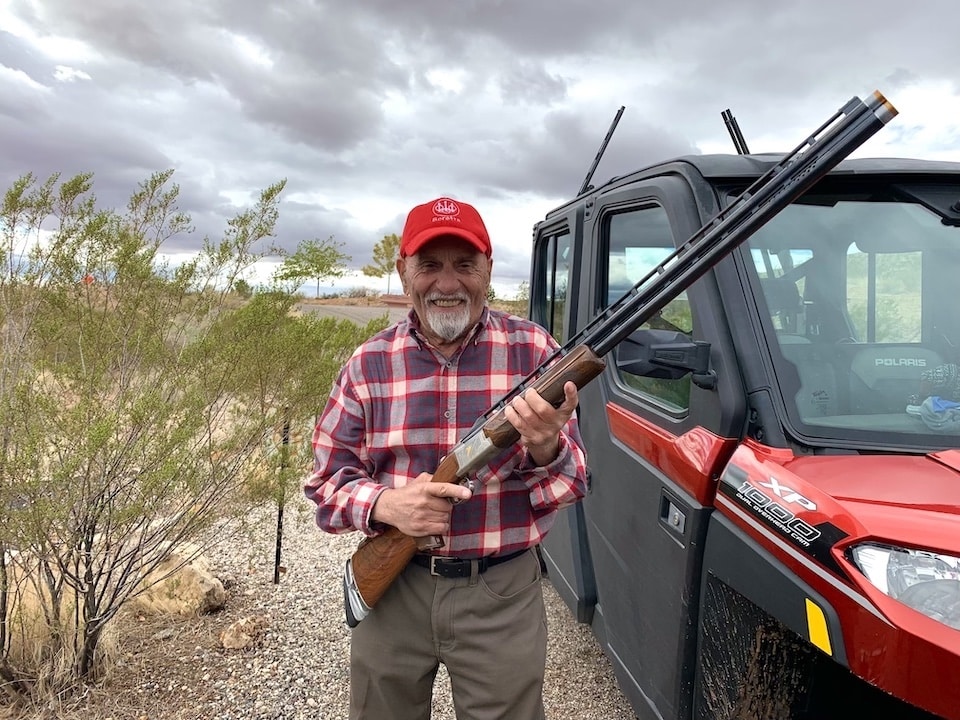
When I first saw Nick, I thought he was about 80-years old. I found out later that he’s 10 years senior to that, but his age doesn’t detract from his ability. He shoots superbly. He looks well, dresses sharply and he’s witty. He’s an engaging conversationalist. His age causes him a bit of trouble walking, but when he’s in the shooting line, he shows the form of a younger man.
Nick told me later that he first appeared at the Huntsman World Senior Games in 2011, but he’s been shooting sporting clays since 1988. He tries to enter 12 to 14 shoots per year, an impressive number. While I competed in Bianchi Cup, I would participate in as many as 16 matches a year, and I know how grueling it is to average more than one competition per month.
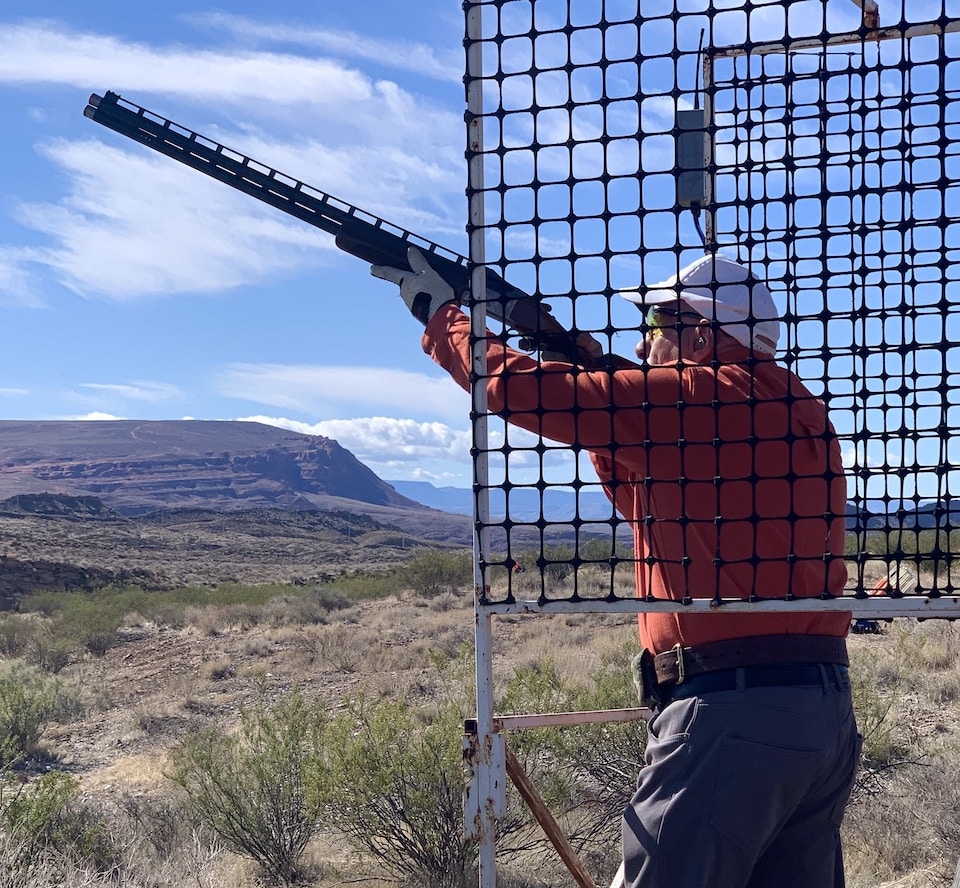
As Nick texted me after the competition, Clint Eastwood would say: “Got to keep the old man out.”
Nick is keeping the old man out. Watching him compete inspired me to keep working at this discipline while I’m healthy enough to do it, even if I do not pursue sporting clay shooting as vigorously as I did the Bianchi Cup.
Nick and his wife live about 15 minutes from the shooting range, and they plan to invite me to their house for dinner this year. Nick loves to cook, his wife loves to bake and I love to eat. So, it promises to be good fun.
I look forward to hearing about Nick’s life story. He’s a role model. I want to learn how to grow old as well as he does.
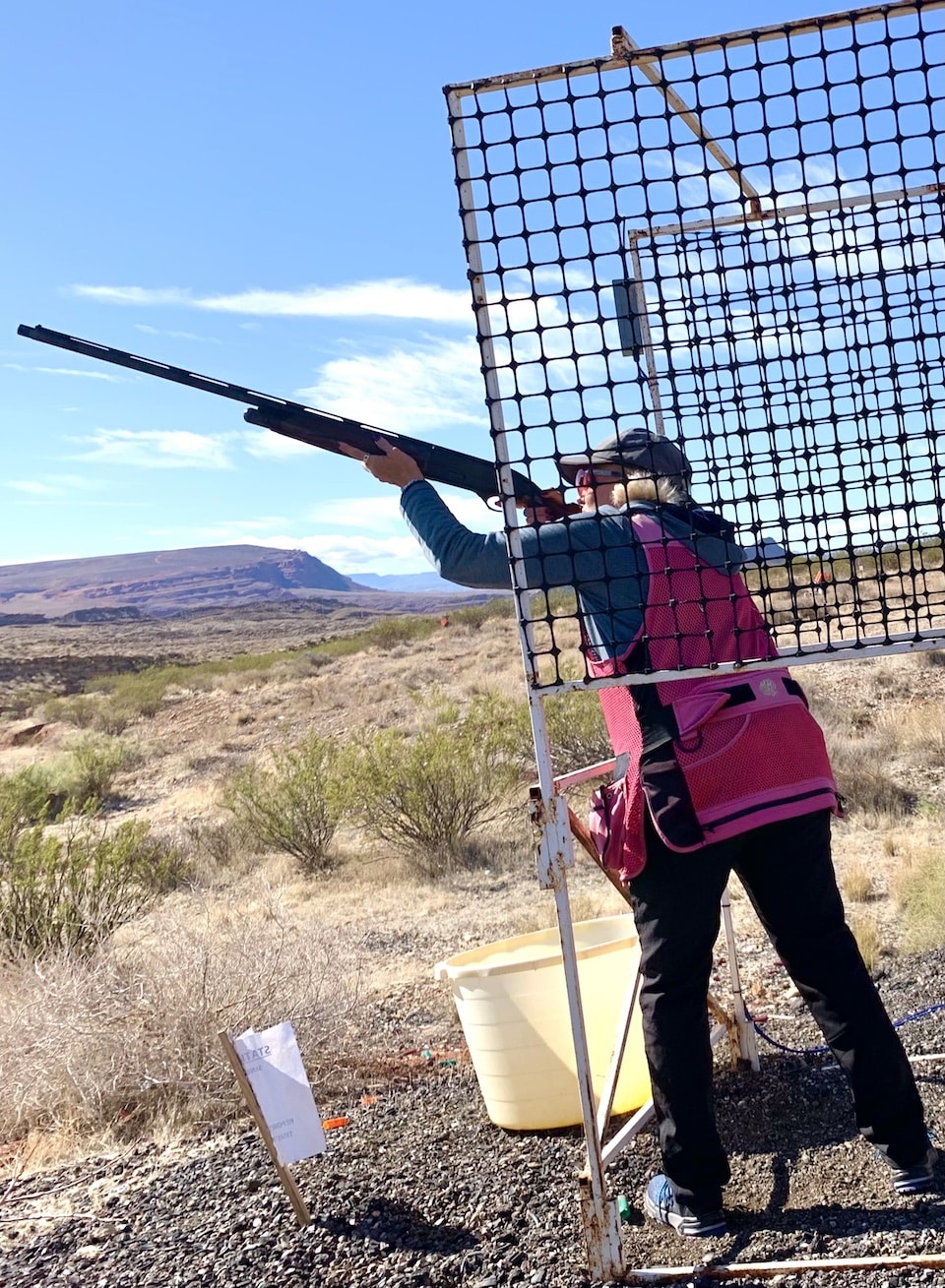
Being open to forming a friendship through shotgun shooting is new terrain for me. I met some wonderful people and gained some friendships and mentors throughout my more than 20 years competing in Bianchi Cup and in Steel Challenge before that.
But I did not view competitions as an opportunity to socialize or go to dinner with fellow shooters. Matches became business trips. That’s the only way I could compete and stay sharp. If anything creeped into my mental space, I would not stay as focused as I needed to be.
But while I traveled home from Utah, I found myself thinking that I would enjoy getting to know a few shooters socially this time around and enjoy fellowship over dinner.
I always aim to perform to my ability, and of course I will devote myself to practicing so that I enter the competition next fall as sharp as possible. But I also understand I do not intend to approach this stage of my shooting career with the same mindset that I devoted to Bianchi Cup.
I plan to compete in sporting clays through at least 2024. My intent in doing so is largely geared toward keeping mentally and physically fit and promoting my health.
This is the final stage of my active life, and the chance at gaining friendships means as much or more than any medal ever could.
I also must pay close attention to my body and not risk injury. I will turn 76 in December. At my age, an injury could set me back two years. I cannot afford to have that happen. Being laid up for that long would be devastating to the momentum I’ve built since starting this discipline.
Of course, taking my foot off the gas is not my natural state, and I’m currently training several days a week in California as I prepare for the Senior Games. Given my nature, I sometimes I need my husband, Carlos, to remind me that caution is the best approach. This occurred while I was in Utah.
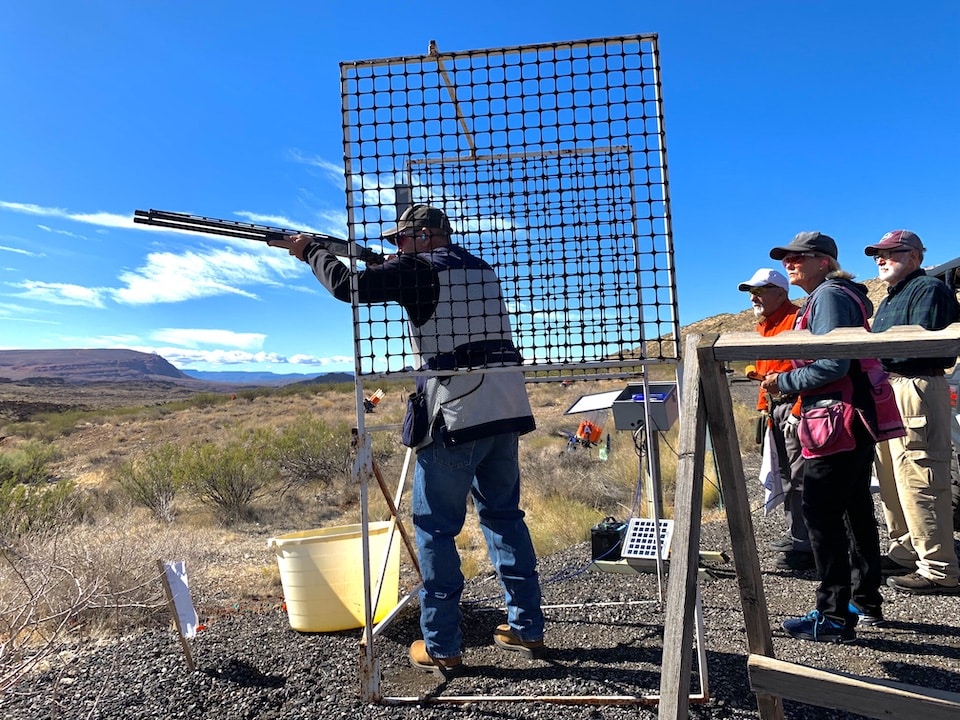
I had been scheduled to receive three training sessions from Richard while on my trip. However, my first night in Utah, I slipped on a patch of water in the bathroom and fell to the floor. Thankfully, I did not hit my head, but I felt pain in my left elbow, and I developed deep bleeding in my elbow and wrist. I treated my injuries with Advil and wore a wrist guard. I iced my hands at night. By the second morning after my injury, I could move my hand. I thought that, after a few more days, I might recover in time to do the training sessions. After all, I have grown accustomed to overcoming injuries throughout my career.
But when I told Carlos about my situation, he advised against rushing into my training.
“I don’t think so, Vera,” Carlos said. Carlos reminded me of an injury situation I experienced many years ago and how I rushed back too soon.
I was competing in Steel Challenge in my 40s and anxious to become good in the competition. I trained relentlessly under a coach whom I thought would accelerate my development. After so many fast draws, I developed tendinitis in my elbow. I took some aspirin and continued to practice for a few days. Carlos was traveling at the time. By the time Carlos returned home, my injury had worsened. I was in bad shape. My forearm had swelled up, looking as if I had a tennis ball on my arm. My hand resembled a chicken claw. I began seeing an acupuncturist for my injury.
I couldn’t shoot again for 1½ years.
“You’ve been to that place before, and you don’t want that again,” Carlos reminded me.
Carlos’ words carried truth. I did not want a replay of that situation. Rushing back could stall my shooting progress.
Carlos talked me out of doing the training sessions, and I instead focused on observing the super squad, learning what the event required, and absorbing whatever knowledge I could from being around talented competitors.
Carlos believes God sent me two messages during that Utah trip:
Number 1: Slow down. Don’t rush. Be a competitor, but a smart one.
Number 2: God introduced me to Nick to show me I can still compete when I’m 90.
I needed time to heal, and then I needed to get going again. Caution is required at my age, but that doesn’t mean I cannot continue to compete for years to come.
Vera Koo is a first-generation Chinese American woman. She’s a wife and mother, author, entrepreneur and retired competition shooter. Along with two published books -- "The Most Unlikely Champion" and "Wisdom and Things: Essays From an Unlikely Champion" -- she writes her column, Vera Koo, at "Women’s Outdoor News." View all posts by Vera Koo